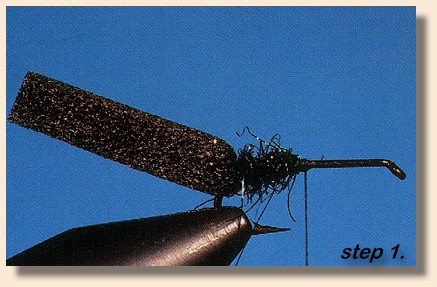
Step 1: Place the hook in the vise and apply a thread base
that covers the back half of the shank. Use a straight edge
and razor blade to cut a strip of foam about as wide as the
hook gape. Tie it to the end of the hook shank and trim off
the waste end. Cover this tie-down point with black dubbing
leaving the thread at the center of the hook.
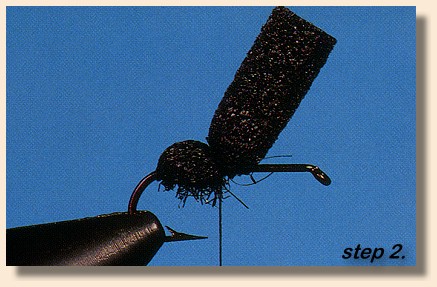
Step 2: Pull the foam strip over and bind it to the center
of the shank slightly forward of the hook point. Pulling
slightly on the foam while tying it down produces a more
rounded segment.
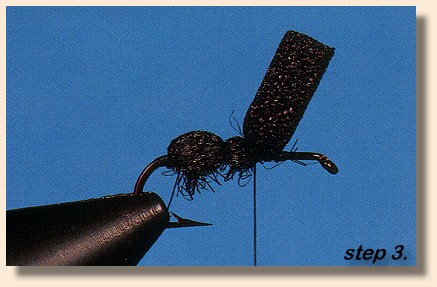
Step 3: Pull the foam strip up, advance the thread a couple
of turns, and cover them with a bit of dubbing. Bring the
foam back to the hook shank and bind it to the hook. Again
a more rounded profile will result if the strip is tied to
the shank while under tension.
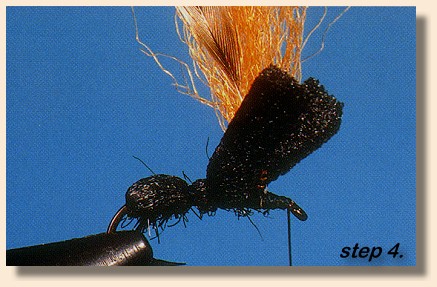
Step 4: Cut the tag end of foam in half. Tie the poly yarn
to the hook at the 1/3 point on the shank, stand it up, and
wrap a parachute platform. Prepare a grizzly hackle feather
by removing the fuzzy material at the base of the stem, tie
it to the hook in front of the post, and bind it to the
parachute platform. Trim the waste end and leave the thread
just behind the hook eye.
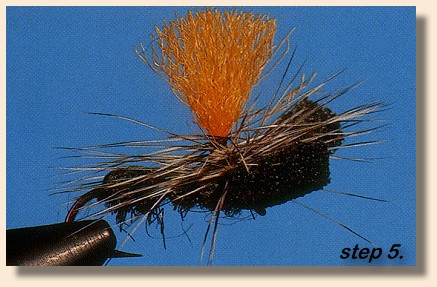
Step 5: Pull the split foam sections around each side of the
post/feather and bind them to the hook at the eye. Tie them
down under tension to make this last segment smaller than the
first. Do not cut the waste ends. Wrap the hackle parachute
style and tie it off on top of the foam. Whip finish and trim
the thread from the hook.
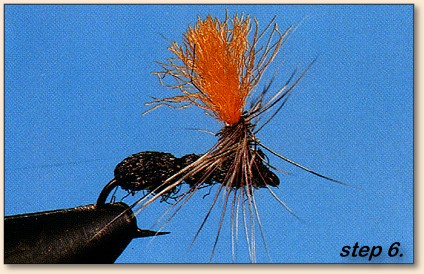
Step 6: Stretch each foam tag and cut it from the hook as close
to the tie-down point as possible. Use the tips of a pair of
sharp scissors to cut off the hackle fibers to the front and
rear of the post, leaving a spent wing. Apply a coat of Aqua
Head to finish the fly. ~ Al & Gretchen Beatty



